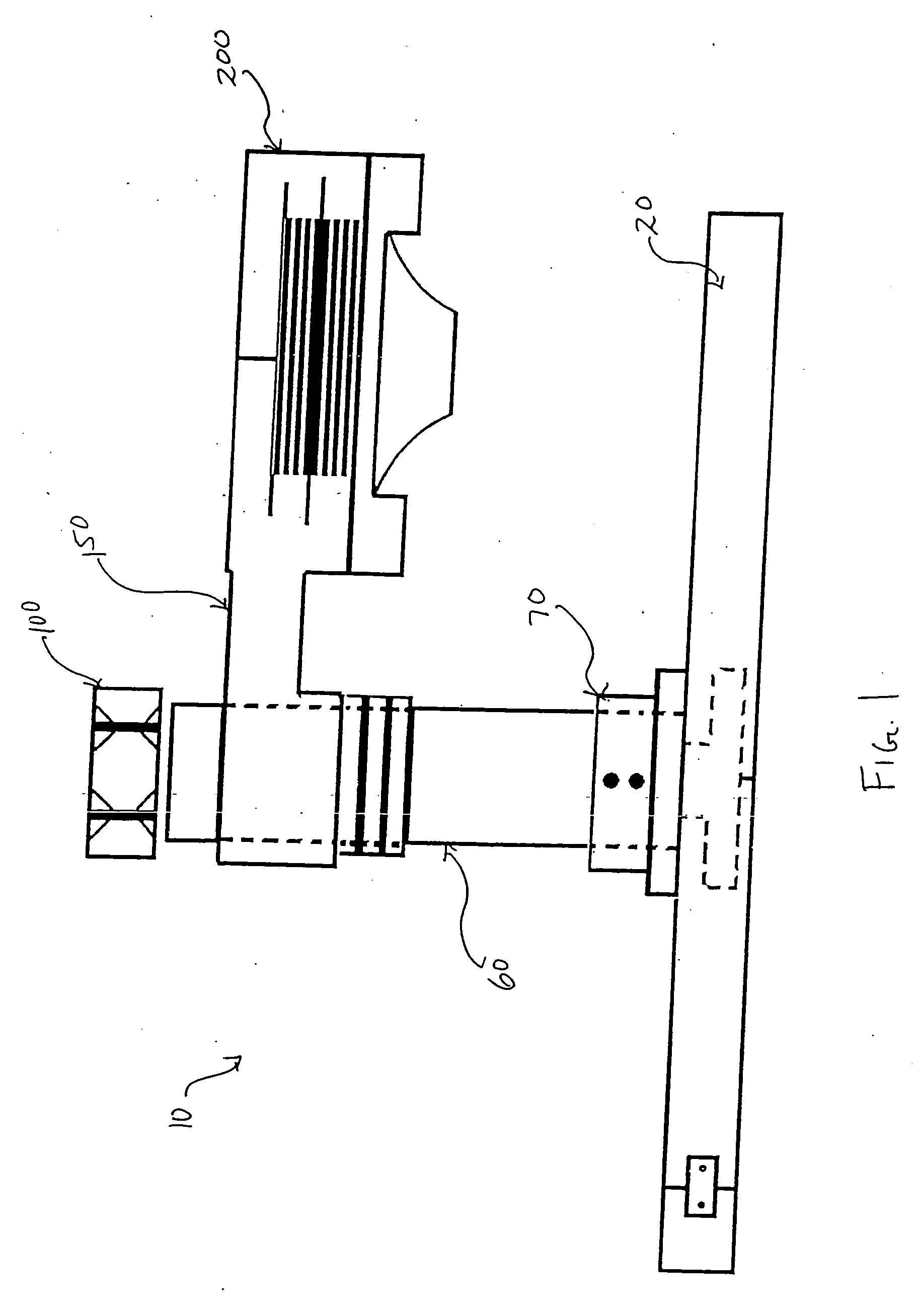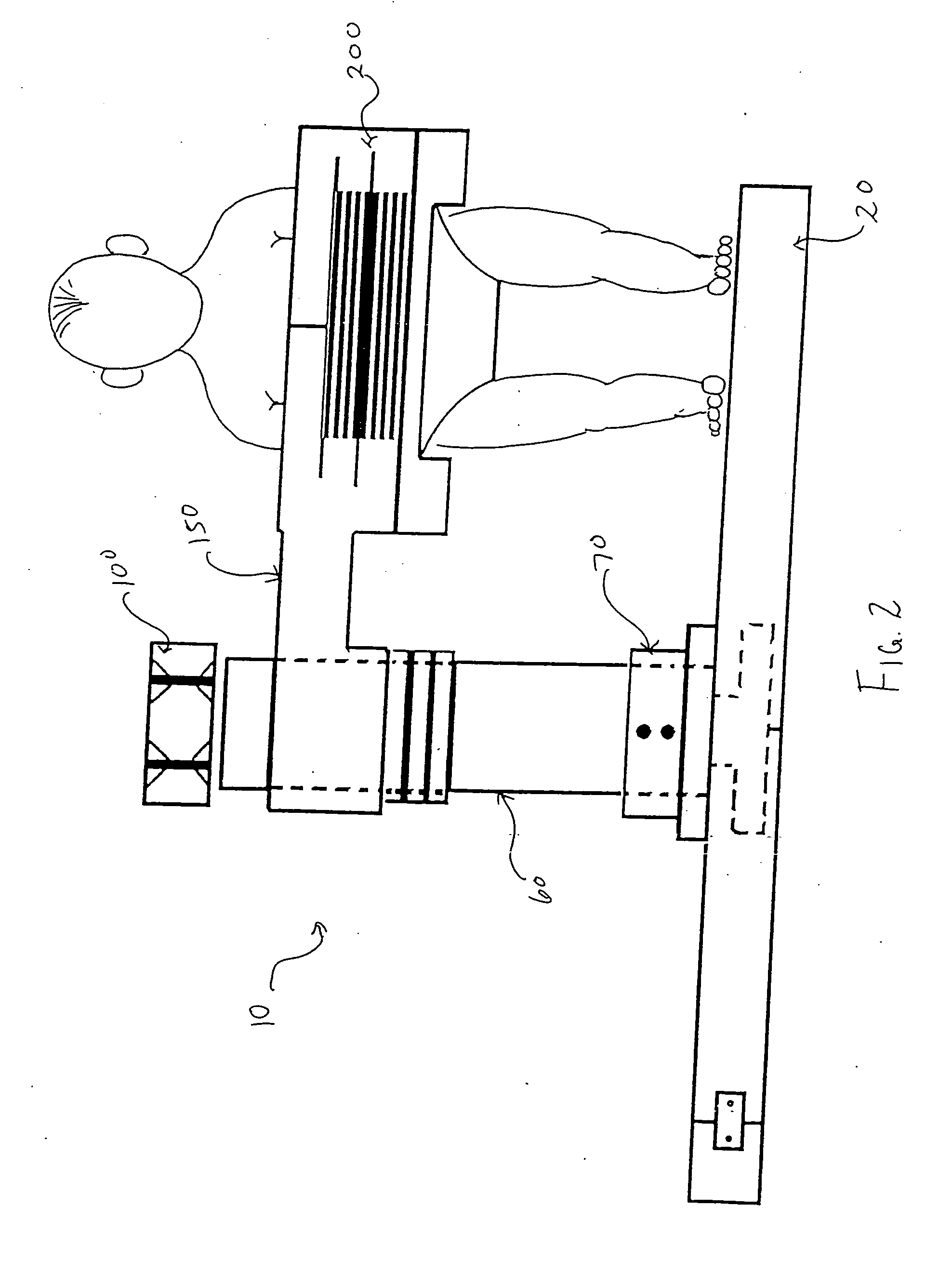Infant walker
a technology for walking and infants, applied in walking aids, gymnastics exercise, physical therapy, etc., can solve the problems of exposing the child/them to dangerous and/or unsafe conditions, the use of mobile walkers is problematic, etc., to reduce the likelihood of a child physically struggling and/or the effect of a safe confinemen
- Summary
- Abstract
- Description
- Claims
- Application Information
AI Technical Summary
Benefits of technology
Problems solved by technology
Method used
Image
Examples
Embodiment Construction
[0043] In describing the preferred and alternate embodiments of the present invention, as illustrated in FIGS. 1-13, specific terminology is employed for the sake of clarity. The invention, however, is not intended to be limited to the specific terminology so selected, and it is to be understood that each specific element includes all technical equivalents that operate in a similar manner to accomplish similar functions.
[0044] Referring now to FIGS. 1-7, the present invention in its preferred embodiment is an infant walker 10 having base assembly 20, shaft assembly 60, pivot arm 150 and seat assembly 200, wherein shaft assembly 60 preferably extends perpendicularly from base assembly 20, and wherein pivot arm 150 and seat assembly 200 are preferably in rotary communication with shaft assembly 60, as more fully described below.
[0045] Referring now more specifically to FIGS. 4-7, base assembly 20 preferably possesses a substantially circular-shaped disk-like platform 22, wherein pla...
PUM
 Login to View More
Login to View More Abstract
Description
Claims
Application Information
 Login to View More
Login to View More - R&D
- Intellectual Property
- Life Sciences
- Materials
- Tech Scout
- Unparalleled Data Quality
- Higher Quality Content
- 60% Fewer Hallucinations
Browse by: Latest US Patents, China's latest patents, Technical Efficacy Thesaurus, Application Domain, Technology Topic, Popular Technical Reports.
© 2025 PatSnap. All rights reserved.Legal|Privacy policy|Modern Slavery Act Transparency Statement|Sitemap|About US| Contact US: help@patsnap.com



